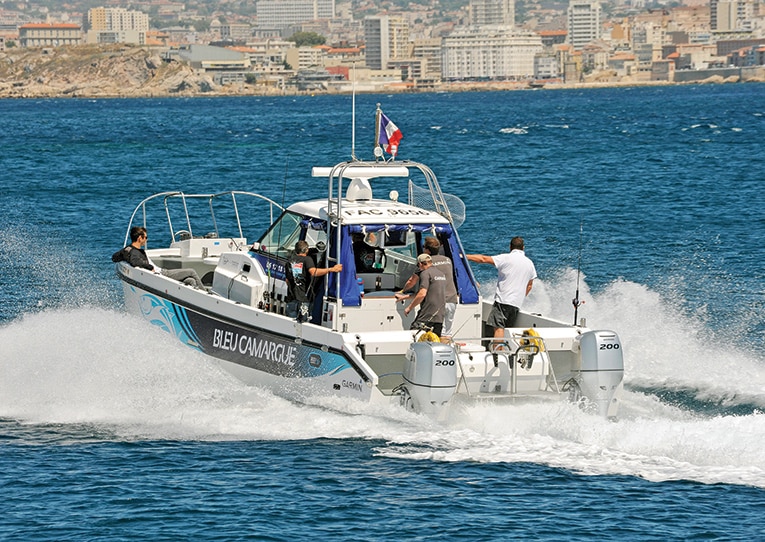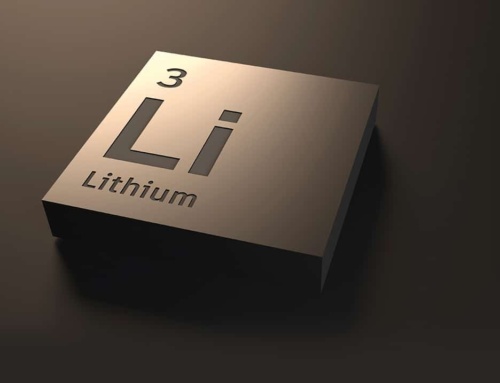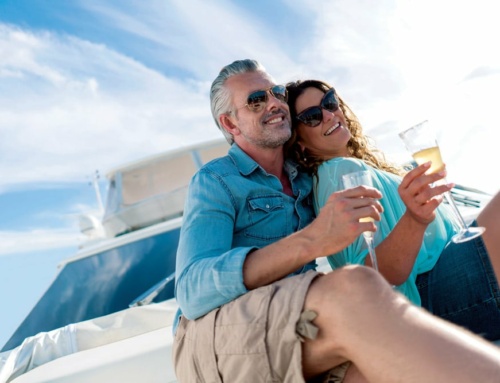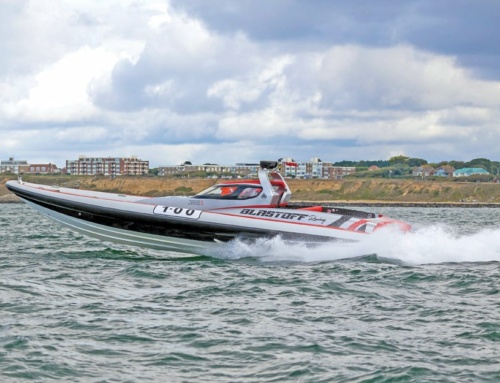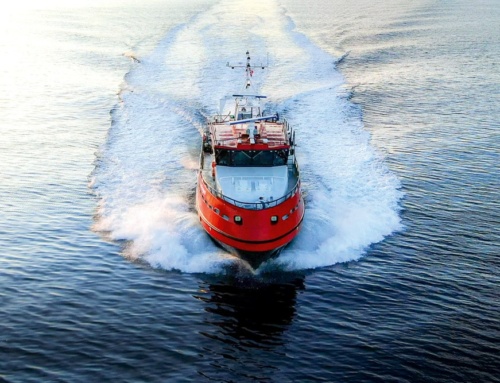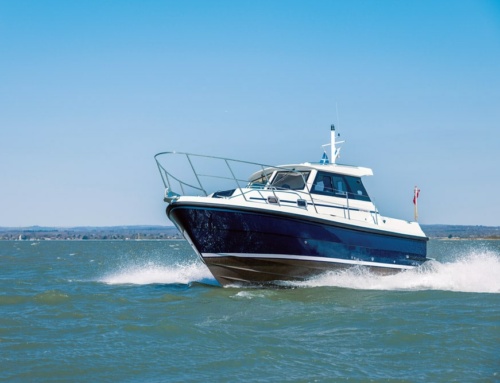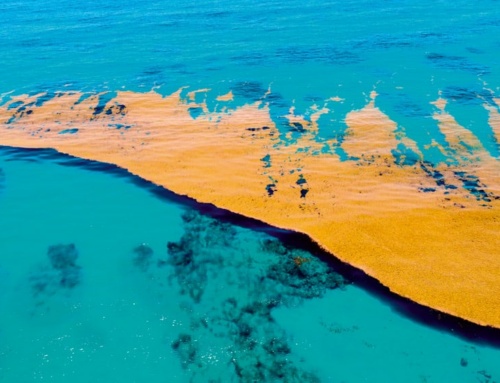- Their power has to be experienced to be believed – it is like being hooked up to the Venice Simplon Express.
- It is an area that is steeped in history, culture and tradition…
- … it is the landscape that has shaped these traditions and natural phenomena, one of which is the fishing heritage off this special piece of coastline…
There is no need to travel to the other side of the world for game fishing. The South of France can offer sport fishing to rival others, on a budget, and is close enough to go for a long weekend. Simon Everett finds out about this little known gem of a fishery.
Xavier Demerre runs a British-built, 9.7m Cheetah catamaran as a very fast, yet stable, fishing platform to chase the shoals of big tuna found off the historic coast of the Camargue. It is an interesting situation with regard to the sport fishing in the area, and the Cheetah cat has some useful advantages over the more accepted form of monohull sport fishing boat. The fishing itself is for big game fish up to 300kg, offering true sport fishing just a couple of hours away on a cheap flight from Britain.
The boat is moored in the ancient fishing village of Saintes-Maries-de-la-Mer, which lies to the west of Marseille. The village is situated slap-bang in the middle of the picturesque, and iconic, Parc Naturel de Camargue, an area famous for the beautiful white horses and the magnificent black bulls that graze the lush grass of the marshland areas. The Camargue is the name given to the marshland created by the delta system of the River Rhône, one of the largest rivers in France. This vast wetland is a birdwatcher’s paradise, with a myriad of migratory species of all kinds visiting it on their migratory flights in spring and autumn. Pink flamingos are abundant in the pools of the saltmarsh, scooping up the millions of shrimps and other invertebrates that live in these nutrient-rich waters.
It is an area that is steeped in history, culture and tradition, and like so many other special places it is the landscape that has shaped these traditions and natural phenomena, one of which is the fishing heritage off this special piece of coastline with very little habitation. In fact, Saintes-Maries-de-la-Mer, where Bleu Camargue is moored, is the only village on the entire Camargue shoreline and gives easy and immediate access to the rich fishing to be found in the bay, brought close as a direct result of the outflows from the Rhône.
It is this special set of circumstances that forms the Camargue and the way of life that has developed here. In addition to the magnificent bulls and splendid horses, the area is important as a source of rice and salt, with paddy fields and salt pans making a patchwork feature of the landscape. The area has been cultivated and salt evaporated from the seawater since the Middle ages, when salt was a major source of currency, creating a prosperous community. Even today there are over 20,000 hectares given over to rice production, responsible for over 5% of the rice produced in the whole of Europe.
To complement the rice growing, the pans create mountains of salt beside the pools used to evaporate the water, leaving behind the pure white crystal flowers, for them to be gathered into great heaps that look like the Alps in miniature as you drive down the marshland road south and east of Arles, following the Grand Rhône. The main salt production is centred on the village of Salin-de-Giraud, on a back road that ends on the beach, with the azure Mediterranean stretching before you. There is nothing else in this expanse of marshland and the road is a no-through route, forcing the traveller to retrace their steps.
For the visiting angler, the most convenient flight from the UK is into Marseilles, unless you are lucky and your local airport has flights to Arles or Montpellier. Arles is the closest town to Saintes-Maries-de-la-Mer. A walled medieval town that inspired Van Gogh and was a provincial capital of the Roman Empire, the amphitheatre still stands and hosts concerts, theatrical performances and the local form of bullfighting that involves no letting of blood. Instead of the expected Spanish type of bullfight, the Camargue version involves dressing the bull’s horns with ribbons and decorations beforehand, and the bullfighters then try and steal the adornments from the lively bull by hand, in a show of deft (or daft) courage and agility, before leaping up the boards to escape the attentions of the bull.
So it is against this backdrop of ancient civilisation and sympathetic cultivation that the fishing sits within the cycle of nature. The Rhône pours into the sea supplying high-nutrient-content water to it, which benefits the invertebrates and growing fish fry. The multitude of growing fry provide good feeding for sardine-sized fish and they in turn attract the big predators. The late summer is the time for the tuna, with the season opening in July and finishing at the end of October. The last weeks of September and through the start of autumn into October are usually the prime time. Xavier’s best day to date resulted in 15 runs from big tuna, with 12 of them being successfully boated, in addition to numerous smaller bonito, so the crew are experienced and know how to put their clients on the fish and give them a good day.
This year Xavier has upgraded his boat to better serve his angling customers. The choice of boat is unusual for France where partisan purchasing is de rigueur. The 10m Cheetah catamaran, with its island wheelhouse, provides full, unfettered access to the uninterrupted deck access for 360 degrees, which makes fighting a tuna easier. Whichever way the fish runs, the clear deck allows the man with the rod to follow and get to the gunwale without the line running under the boat. When you are fighting fish like the yellowfin tuna up to 100kg (220lb) and the bluefin tuna, which they catch up to about 300kg (660lb), mobility around the deck is vital.
Bleu Camargue is also one of the fastest boats in the region. Another major benefit of the Cheetah is her seakeeping and turn of speed. With a pair of Honda BF200hp outboards mounted she cruises happily at 20 knots using just 45 litres per hour, but when there is a bait bust on the surface she can sprint to the action at 35 knots, even with a full complement of crew and gear. This is a major advantage as the first boat to arrive on the scene has the greatest chance of catching.
She has another ace up her sleeve, though – coupled to her blistering acceleration and turn of speed, the Garmin electronics provide eyes both above and below water. The Garmin radar is so sensitive that it can pick up the surface activity of birds on a bait bust even at a couple of miles. The advanced sonar doesn’t just locate shoals of baitfish, but also individual tuna holding deep, and the exact depth is recorded. Each fish shows up as an individual target arch and can be distinguished from other species of fish. These technologies, together with Xavier’s local knowledge of the fishing, and the speed and suitability of the Cheetah’s large and open-access deck, build the package into a winning hand.
The biggest target species is the mighty bluefin tuna, along with other tuna species such as a number of yellowfin, redfin and the small bonito, plus swordfish at night. Different angling techniques are employed, depending on the species. For the bonito and yellowfin tuna, jigging works well, or casting small metal lures at the feeding frenzy with birds taking advantage of the sardines driven to the surface by the tuna attacking from below. This is exciting, frenetic fishing and a bait bust can be over as fast as it begins, only to reappear 400 yards away. This is when the bird-sensitive radar comes into its own – it enables Xavier to pinpoint these feeding frenzies at range and gives Bleu Camargue a distinct edge over the other boats as there can be a bit of a race to be the first boat there, especially in fishing competitions when the rules stipulate that the other boats have to stay outside a ½nm radius from a boat already fishing.
The main tuna season runs from August through to the end of October, with September and the early part of October being the prime time. Although these tuna are found right through the Mediterranean as far as the Adriatic, the waters of the Bay of Camargue have a particular attraction and put the fish within a short steam of port, often within 10 miles, which maximises the amount of time spent actually fishing.
Heading out from the typically French medieval walled town, the clean, crisp wakes from the twin sponsons follow us like airliner vapour trails in the bright blue sea. As we clear the near shore and the depth drops away, Xavier has his eyes everywhere, on the water all around, looking for the signs of fish on the surface, on the sonar for the telltale arch of an individual fish, and on the radar for the return from a flock of birds at a feeding frenzy.
Approaching a patch of water boiling from activity, casts are made towards this frenzy and the lures work to suggest injured baitfish in the hope a tuna will grab your lure, at which point the rod is nearly wrenched from your grasp as the fish pulls you off balance and strips line off the reel as fast as Bleu Camargue at full throttle – even these small tuna, the bonito, can easily hit 35 knots. They are not big fish in the grand scheme of things, averaging around the 5–8 kg mark, but if you can imagine a turbocharged mackerel of that size, you will get the idea. Suddenly fishing isn’t boring at all.
For the larger tuna a different approach is needed most of the time. Once some fish are located on the sonar, lying deep, the big rods are brought out. Very much like our fishing for sharks, the system involves using a large circle hook, size 7/0, to fit the whole sardine used for bait. The weight used is matched to the depth, at the rate of 100g for every 10m. The lines are then set in a spread of depth and distance from the boat. Balloons are used as floats, because they can be easily moved and immediately let loose on a take. A small section of silicone tube is slid on the line, and the balloon is attached to a matchstick by a short length of line. The matchstick is pushed into the end of the silicone tube at the depth required. When a fish takes, the match comes out of the tube and leads the fish direct to the rod. The high-resolution sonar gives a great indication of the depth at which to set the baits to take much of the guesswork out of the equation.
The tuna stocks are fiercely protected and the regulations surrounding this tuna fishery are very stringent and rigorously enforced with severe penalties for transgressions. Consequently the numbers and average size of the tuna are increasing every year. The catch and release programme has already proven that sport fishing is worth far more to the local economy than those same fish landed dead on the quayside – these fish are far too valuable to be only caught once.
Once the baits are set, more sardines are cut up and a steady stream of chunks is dropped over the side to create a trail for the fish to follow and to get them into the feeding mood, at which point hopefully one of the whole sardines will be taken. When a fish runs, the other rods have to be brought in very rapidly while an angler plays the tuna. With the other rods in and safe the boat is then used to give chase to the tuna; they are so strong and fast they will easily empty the reel of line, otherwise, against a sustained drag of 40lb, one of these fish will take 400 yards of line in 30 seconds. Their power has to be experienced to be believed – it is like being hooked up to the Venice Simplon Express.
Instead of me trying to paint a picture of this with words, why don’t you book a trip with Xavier yourself, feel the thrill first-hand and get a lovely ride on a very special Cheetah cat at the same time? It would make a fabulous few days away.
Getting There
There are regular flights to Marseille, Perpignan and Arles. From Marseilles, catch the train to Arles and bus to Saint-Maries-de-la-Mer. Or hire a car and enjoy the drive.
Boat Details
- LOA: 9.7m
- Beam: 3.7m
- Draught: 0.4m
- Cabin width: 2.4m
- Cockpit length: 2.4m
- Fuel capacity : 2 x 250 litres
- Max. power: 2 x 300hp
- Max. speed with 2 x 200hp: 35.7 knots
Contact
Bleu Camargue is operated by Xavier Demerre. He can be contacted by telephone in the evening on 00 33 6 12 18 11 60 or by email at demxav@gmail.com.
Website: www.bleucamargue.com
Cheetah Marine: www.cheetahmarine.co.uk

